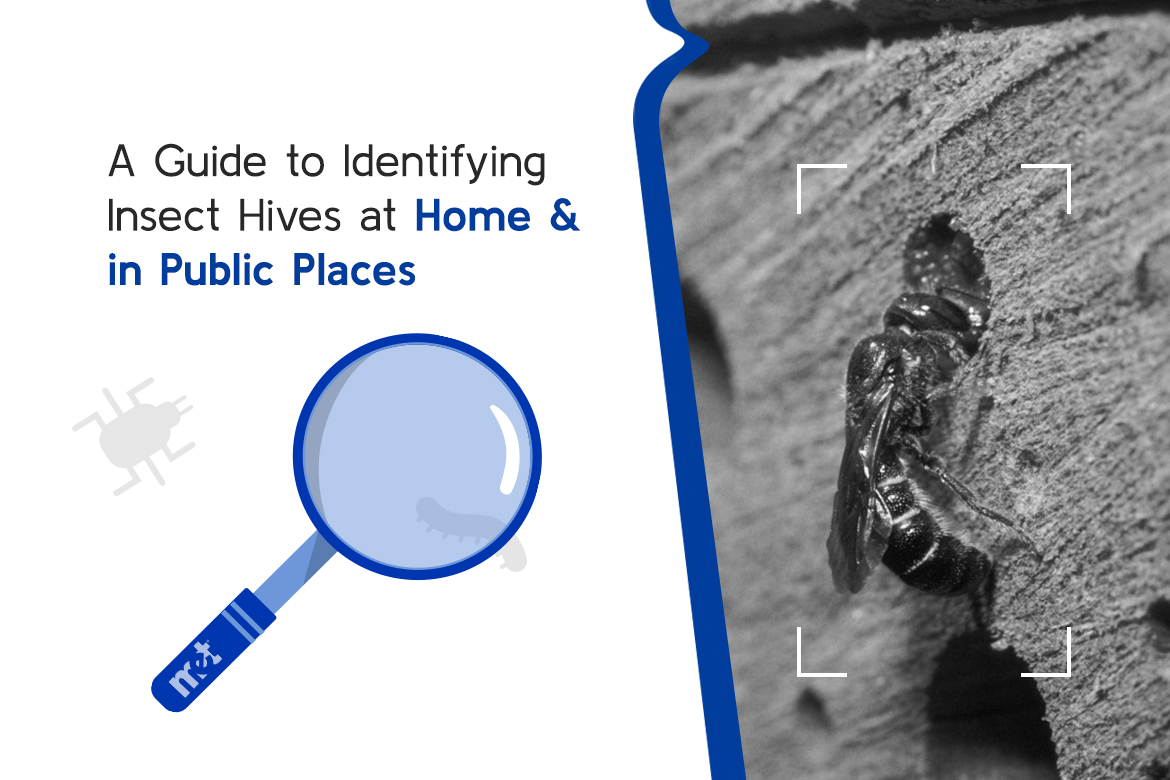Insect hives can pose significant risks to safety, both at home and in public spaces. The ability to identify these hives is crucial for preventing painful stings and potential allergic reactions. This importance was underscored by a recent incident at Sungei Buloh Nature Reserve in Singapore, where a hornet attack sent five people to the hospital, highlighting the potential dangers of encountering aggressive insect colonies in public places.
Common insect hives include those of bees, wasps, and hornets, each with its unique characteristics and preferred nesting locations. From the buzzing activity of bees in your garden to the hidden nests of wasps under eaves, recognizing these hives can prevent unpleasant encounters and costly damage. Understanding these dangers and taking appropriate measures can make a significant difference in ensuring safety and peace of mind.
In this guide, we will explore the different types of insect hives you may encounter at home and in public places, how to protect yourself if you come across them, and what steps to take if a colony becomes agitated or if you are stung. By being informed and prepared, you can minimize risks and effectively manage these common pests.
Types of Insects & Their Hives
Identifying the different types of insect hives is essential for ensuring safety at home and in public places. By understanding the characteristics and common locations of bee, wasp, and hornet hives, you can better protect yourself and those around you. This section provides detailed information on these three types of insects, their behaviour, and how to recognize their hives. Whether in urban parks, residential areas, or natural reserves, being aware of these insect hives can help prevent dangerous encounters and facilitate prompt professional intervention when necessary.
a) Bees:
Bees are generally harmless unless provoked. They are essential for pollination and play a critical role in maintaining ecological balance. Common species include honeybees and bumblebees.
Bees typically build their hives in sheltered, undisturbed locations. You can often find them in tree hollows, under eaves, or inside wall cavities. In public places, they might nest in garden sheds or under benches.
Bee hives are usually made of wax, with a characteristic hexagonal cell structure. Honeybee hives can house thousands of bees, while bumblebee nests are smaller. Bees are generally less aggressive unless their hive is disturbed.
b) Wasps:
Wasps are more aggressive than bees and can sting multiple times. They play a role in controlling pest populations but can be a nuisance and a danger when nesting near human activity.
Wasps build their nests in various locations, including under eaves, in attics, and in ground cavities. In public places, wasps may nest in playground equipment, outdoor furniture, or hidden crevices.
Wasp nests are made from chewed wood fibres mixed with saliva, giving them a papery appearance. These nests can vary in size from a golf ball to several feet in diameter. Wasps are territorial and can become aggressive if their nest is threatened.
c) Hornets:
Hornets are larger and more aggressive than wasps and bees. They can deliver a more painful sting and are especially protective of their nests.
Hornets often build large, conspicuous nests in trees, shrubs, or on buildings. They can also nest in attics or wall voids. In public places, hornet nests might be found in park trees or outdoor structures.
Hornet nests are similar to wasp nests but are larger and more robust. They are made from chewed wood pulp and are typically found high above the ground. Hornets are extremely protective of their hives and can become very aggressive if disturbed.
Understanding these insects and their hives is crucial for safety. Always approach potential hives with caution and seek professional help if you need to remove them. For more comprehensive pest control solutions, MET Pest Control offers expert services to manage and eliminate these and other pests.
Steps to Protect Yourself if You Encounter a Hive
Encountering an insect hive can be alarming, but following these steps can help you stay safe:
1) Stay Calm:
Insects such as bees, wasps, and hornets are more likely to sting if they perceive a threat. Sudden movements can trigger their defensive instincts. By remaining still and calm, you reduce the chances of provoking an aggressive response.
2) Keep Your Distance:
The best way to avoid getting stung is to maintain a safe distance from the hive. Approaching too closely can be seen as a threat by the insects, prompting them to defend their home. If you see a hive, observe it from afar and do not attempt to touch or disturb it in any way.
3) Notify Others:
If you encounter a hive in a public place or a shared space, make sure to inform others about its location. This is especially important if there are children or pets around who might inadvertently disturb the hive. Clear communication helps everyone stay safe.
4) Contact Professionals:
When dealing with a hive, it’s crucial to call pest control experts like MET Pest Control. Professionals have the necessary equipment and expertise to handle insect hives safely. They can assess the situation and remove the hive without putting anyone at risk. Attempting to remove a hive on your own can be dangerous and should be avoided.
What to Do If You’ve Agitated a Colony
If you accidentally agitate a colony, follow these steps to minimize harm:
1) Move Slowly:
Sudden, jerky movements can escalate the situation. Retreat slowly and calmly from the area to avoid further provoking the insects. This helps reduce the likelihood of additional stings.
2) Seek Shelter:
Find a closed space such as a car or building to protect yourself from further stings. Once inside, close all windows and doors to keep the insects out. If you are outdoors and there is no shelter nearby, try to cover your head and face, as these areas are most vulnerable to stings.
3) Remove Stingers:
If you are stung, it’s important to remove the stinger as quickly as possible. Use a credit card or similar object to scrape the stinger out without squeezing it, as squeezing can release more venom into your skin. This method helps minimize the amount of venom injected and reduces pain and swelling.
What to Do If You Have Been Stung
Stings can be painful and cause various reactions. Here’s how to treat them:
1) Wash the Area:
Clean the sting site with soap and water to remove any bacteria or venom residue. This helps prevent infection and soothes the area.
2) Apply Ice:
Reduce swelling and numb the pain by applying an ice pack wrapped in a cloth. Hold it on the sting site for 10-minute intervals, with breaks in between, to avoid frostbite.
3) Take Antihistamines:
Over-the-counter antihistamines can help alleviate itching and swelling. Follow the dosage instructions on the package and consider consulting a healthcare professional if you have any concerns.
4) Seek Medical Attention:
If you experience symptoms of an allergic reaction such as difficulty breathing, swelling of the face or throat, or a rapid pulse, seek immediate medical help. Allergic reactions can be life-threatening and require urgent care. It’s important to act quickly and get the necessary medical assistance.
Identifying insect hives and taking proper precautions is crucial for ensuring safety at home and in public places. Whether it’s bees, wasps, or hornets, understanding the characteristics of these insects and their hives can help you avoid dangerous encounters. Knowing how to protect yourself and what steps to take if you encounter or agitate a hive can prevent injuries and allergic reactions.
Professional pest control services play a vital role in managing insect hives safely and effectively. Companies like MET Pest Control have the expertise and equipment to handle these situations without putting you or others at risk. They can provide tailored solutions for hive removal and offer advice on preventing future infestations.
Staying informed and proactive about hive identification and safety measures is essential. By doing so, you not only protect yourself but also contribute to the safety of your community. Remember, early detection and prompt action can make a significant difference in preventing harmful incidents involving insect hives.
If you suspect the presence of an insect hive in or around your home, don’t wait for the problem to escalate. Contact MET Pest Control for expert advice and professional hive removal services. Our experienced team is ready to assess your situation and provide customized solutions to ensure your safety.
Schedule an inspection with MET Pest Control to prevent infestations and address any pest-related concerns. Reach out to us today via phone or our website to book your appointment. Let us help you create a safer environment for you and your loved ones.

